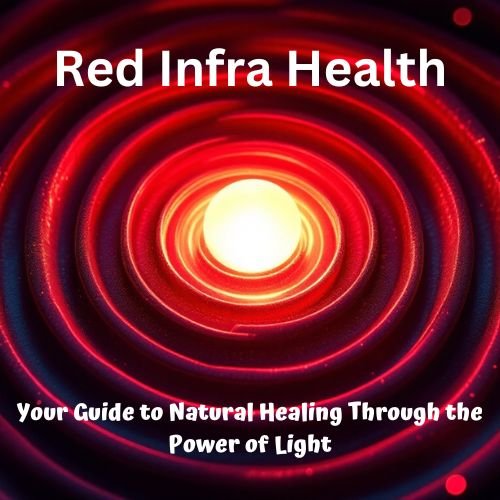Near-wavelength therapy can soothe autoimmune flare-ups by enhancing your cellular function and modulating inflammation. This therapy works by using specific light wavelengths that boost ATP production in your cells, promoting energy and repair. It reduces inflammatory markers, helping to alleviate symptoms associated with conditions like rheumatoid arthritis. As blood circulation improves, oxygen and nutrients flood your tissues, facilitating healing. Additionally, it supports your immune system by balancing responses and increasing the activity of infection-fighting cells. Curious to discover more about how this therapy can transform your health?
Mechanism of Photobiomodulation

Photobiomodulation (PBM) operates through a series of well-defined mechanisms that enhance cellular function. When you expose your cells to specific wavelengths of light, photons get absorbed mainly by cytochrome c oxidase (COX) within the mitochondria. This absorption happens in the red and near-infrared regions of the light spectrum.
As COX absorbs light, it increases electron transport by dissociating inhibitory nitric oxide, boosting enzyme activity and making more electrons available for reducing molecular oxygen. As a result, your mitochondrial membrane potential (MMP) and ATP production ramp up. This increased ATP production is pivotal for restoring normal cellular function which is vital for any damaged tissues.
PBM enhances the activity of various complexes in the electron transfer chain, leading to increased oxygen consumption, especially at complex IV. Higher ATP levels help restore normal cellular function, which is vital for any damaged tissues.
Additionally, photon absorption activates numerous signaling pathways involving reactive oxygen species (ROS) and calcium ions. These pathways stimulate gene expression linked to protein synthesis and cell migration.
In turn, this boosts the production of anti-apoptotic proteins and antioxidant enzymes, improving cell survival. Overall, PBM's mechanisms promote essential cellular responses, paving the way for better health and healing.
Benefits of Inflammation Modulation
How can inflammation modulation transform your experience with autoimmune conditions? By utilizing photobiomodulation (PBM), you can considerably reduce the inflammation that often exacerbates your symptoms. This therapy works by downregulating proinflammatory cytokines and upregulating anti-inflammatory ones, promoting a balanced immune response.
The benefits of inflammation modulation through PBM include:
- Reduction in inflammation: Lowering key inflammatory markers, such as IL-1β and IL-18, decreases overall tissue and organ inflammation.
- Symptom improvement: Alleviating pain and other debilitating symptoms helps in managing conditions like rheumatoid arthritis and psoriasis more effectively. Recent studies have shown that non-invasive vagus nerve stimulation (VNS) can also lead to a reduction in cytokine levels, further supporting the modulation of inflammation.
- Enhanced healing: PBM stimulates ATP production, encourages cell proliferation, and boosts antioxidant defenses, promoting tissue repair.
With a focus on reducing inflammation, PBM can prevent flare-ups and improve your quality of life.
You'll find it particularly beneficial for managing disorders affecting joints, the central nervous system, and various other conditions.
Embracing inflammation modulation can lead you on a path to better overall health and a more manageable life with autoimmune challenges.
Enhancing Blood Circulation

Enhancing blood circulation can greatly impact your experience with autoimmune conditions. By utilizing Red Light Therapy (RLT), you can promote the dilation of blood vessels, which boosts blood flow. This increased circulation delivers more oxygen and essential nutrients to your tissues while flushing out inflammatory mediators and cellular waste products.
Proper blood flow is essential for healing and reducing inflammation associated with autoimmune disorders, helping alleviate your symptoms. Moreover, RLT improves tissue oxygenation, crucial for cellular function and effective healing. When more oxygen reaches your tissues, cellular energy production spikes, enabling essential repair processes. This enhanced ATP production supports the cellular mechanisms needed to control inflammation and promotes overall cellular health. Additionally, RLT enhances mitochondrial function, which further aids in the energy production necessary for optimal healing.
Additionally, RLT can reduce vascular constriction, a frequent issue in conditions like Raynaud's phenomenon. By preventing this constriction, you maintain better blood flow, which protects your extremities from tissue damage.
As your vascular health improves, you'll likely notice enhanced circulation benefits, supporting the management of your autoimmune flare-ups more effectively. To summarize, investing in therapies that improve circulation can greatly enhance your overall well-being when coping with autoimmune challenges.
Immune System Support
Many people living with autoimmune conditions find themselves grappling with an unpredictable immune response.
Near-wavelength therapy, particularly Red Light Therapy, offers a powerful way to support your immune system. By stimulating mitochondrial function, it boosts ATP production in immune cells, allowing them to work more efficiently. This therapy enhances the ability of macrophages, pushing them to engulf and eliminate pathogens effectively.
Here's how Red Light Therapy can enhance your immune support:
- Increases the activity of natural killer cells, improving your body's ability to fight infections.
- Reduces inflammatory markers and promotes anti-inflammatory cytokines, balancing your immune response.
- Enhances white blood cell production, which is essential for a robust immune response.
Evidence of Clinical Applications

Red light therapy isn't just a supportive measure for the immune system; it shows significant promise in clinical applications related to autoimmune conditions. Research indicates that this therapy effectively reduces pro-inflammatory cytokines like TNF-α and IL-6, which are often elevated in autoimmune disorders. By targeting inflammatory cells, red light therapy helps decrease inflammation, alleviating symptoms and enhancing your overall quality of life.
Patients with rheumatoid arthritis have reported improved joint mobility and reduced pain and stiffness after treatment. Those suffering from carpal tunnel syndrome experience fewer symptoms such as numbness and tingling thanks to this therapy. While it isn't a cure-all, regular sessions can provide sustained relief and prevent flare-ups.
Clinical studies highlight the benefits of red light therapy for specific autoimmune diseases, including systemic lupus erythematosus, Sjogren's disease, psoriatic arthritis, and Hashimoto's thyroiditis.
The therapy is particularly advantageous for conditions affecting skin and joints, thanks to its non-invasive approach and safety profile. Treatment sessions typically last from 3-20 minutes several times a week, making it a manageable and effective option for many.
Frequently Asked Questions
Is Near-Wavelength Therapy Safe for All Autoimmune Conditions?
While near-wavelength therapy is generally safe for many autoimmune conditions, you should consult a healthcare professional to determine appropriateness for your specific situation, as adherence to treatment guidelines is essential to avoid potential risks.
How Many Treatments Are Typically Needed for Effectiveness?
Typically, you'll need about 3 to 6 sessions over several weeks for effectiveness. Each session lasts 15 to 30 minutes, and consistency is essential to achieve the best results for your specific condition.
Can I Use Near-Wavelength Therapy Alongside Other Treatments?
Yes, you can use near-wavelength therapy alongside other treatments. It complements traditional medications, reduces side effects, and enhances overall effectiveness, allowing for a more tailored approach to managing your symptoms and improving your health.
Are There Any Side Effects Associated With This Therapy?
Yes, there are side effects. You might experience headaches, eye strain, or skin irritation. Be cautious with medications that increase photosensitivity, and consider protective eyewear to minimize risks during your therapy sessions.
What Should I Expect During a Near-Wavelength Therapy Session?
During a near-wavelength therapy session, you'll experience gentle warmth and relaxation as the device enhances circulation. Expect treatment to last about 20 minutes, with improvements in your physical function and pain relief over time.
In Summary
Near-wavelength therapy offers promising benefits for soothing autoimmune flare-ups by harnessing the power of photobiomodulation. It modulates inflammation, enhances blood circulation, and supports your immune system, creating a thorough approach to managing symptoms. With growing clinical evidence backing its efficacy, you can feel empowered to explore this innovative treatment option. Embracing near-wavelength therapy could be a game changer in your journey toward better health and more stable autoimmune conditions.





Leave a Reply